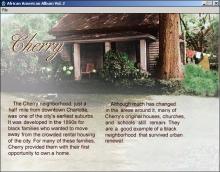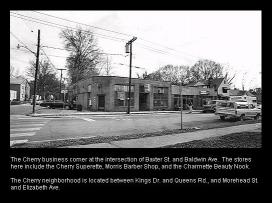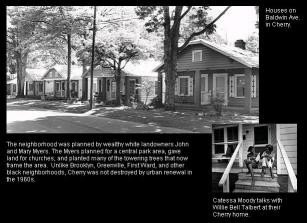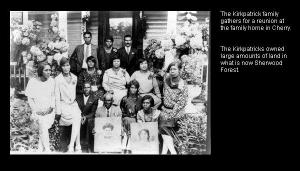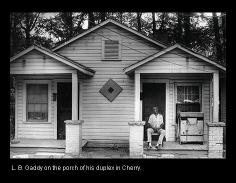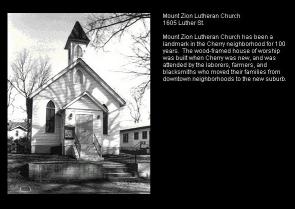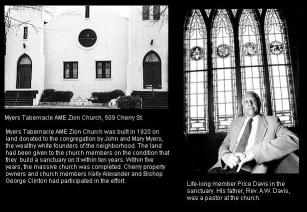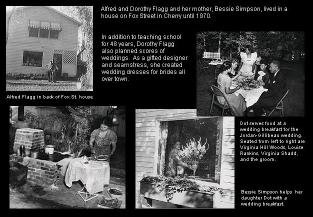You are here
Explore Cherry
The Cherry neighborhood, just a half mile from downtown Charlotte, was one of the city's earliest suburbs. It was developed in the 1890s for black families who wanted to move away from the crowded rental housing of the city. For many of these families, Cherry provided them with their first opportunity to own a home.
Although much has changed in the areas around it, many of Cherry's original houses, churches, and schools still remain. They are a good example of a black neighborhood that survived urban renewal.Mount Zion Lutheran Church
1605 Luther St.
Mount Zion Lutheran Church has been a landmark in the Cherry neighborhood for 100 years. The wood-framed house of worship was built when Cherry was new, and was attended by the laborers, farmers, and blacksmiths who moved their families from downtown neighborhoods to the new suburb.
Morgan School
501 S. Torrence St.
Morgan School, located in the heart of Cherry, was opened in 1925. Here, children read from books that are carefully wrapped with paper at the school's library.
Morgan was one of the many all-black schools closed in 1968. It was reopened in 1973. Today it is a middle school for emotionally-disturbed adolescents.
Alfred Flagg in back of Fox St. house.
Alfred and Dorothy Flagg and her mother Bessie Simpson, lived in a house on Fox Street in Cherry until 1970.
In addition to teaching school for 48 years, Dorothy Flagg also planned scores of weddings. As a gifted designer and seamstress, she created wedding dresses for brides all over town.
Dot serves food at a wedding breakfast for the Jordan-Gillibeau wedding.
Seated from left to right are Virginia Hill Woods, Louise Rankins, Virginia Shadd, and the groom.
Bessie Simpson helps her daughter Dot with a wedding breakfast.
The Cherry business corner at the intersection of Baxter St. and Baldwin Ave.
The stores here include the Cherry Superette, Morris Barber Shop, and the Charmette Beauty Nook.
The Cherry neighborhood is located between Kings Dr. and Queens Rd., and Morehead St. and Elizabeth Ave.
Houses on Baldwin Ave. in Cherry.
The neighborhood was planned by wealthy white landowners John and Mary Myers. The Myers planned for a central park area, gave land for churches, and planted many of the towering trees that now frame the area. Unlike Brooklyn, Greenville, First Ward, and other black neighborhoods, Cherry was not destroyed by urban renewal in the 1960s.
Catessa Moody talks with Willie Bell Talbert at their Cherry home
L. B. Gaddy on the porch of his duplex in Cherry.
The Kirkpatrick family gathers for a reunion at the family home in Cherry.
The Kirkpatricks owned large amounts of land in what is now Sherwood Forest.
Myers Tabernacle AME Zion Church, 509 Cherry St.
Myers Tabernacle AME Zion Church was built in 1920 on land donated to the congregation by John and Mary Myers, the wealthy white founder of the neighborhood. The land had been given to the church members on the condition that they build a sanctuary on it within ten years. Within five years, the massive church was completed. Cherry property owners and church members Kelly Alexander and Bishop George Clinton had participated in the effort.
Life-long member Price Davis in the sanctuary. His father, Rev. A.W. Davis, was a pastor at the church. Learn more about Price Davis' life in Cherry and the Big Apple.
The African American Album: The Black Experience in Charlotte and Mecklenburg County. Vol. 2. Charlotte, NC: Public Library of Charlotte and Mecklenburg County, 1998. Computer optical disc, 4 3/4 in.
